A Biology Lesson
Oh yes… it’s time to get back to biology class!
Having worked as a private tutor for many years, I am very passionate about transferring knowledge and explaining complex matter in an understandable and accessible way.
One of my major goals with ‘Beyond my Blur’ is to educate my readers on our senses in order to create more gratitude and willingness to consciously connect to the five incredible portals through which we experience life.
Ready to learn something new? Then keep on reading!
The Macula
The eye condition I got diagnosed with is officially called ‘Stargardt disease’. It is the most common subtype of ‘juvenile macular degeneration’ (JMD); an umbrella term used to classify a group of inherited eye disorders that affect a part of the eye called the macula.
The macula is the middle part of our retina – a light-sensitive layer of tissue at the back of the eye. It is responsible for processing what is directly in front of us: our central vision. It also allows us to see fine-detail and color. This in comparison to the rest of our retina, which processes our peripheral and night vision.
The macula is sensitive to detail because it contains a very high concentration of cone cells. These are one of the two types of photoreceptor cell (the other being rods) found in the human eye. They are light-sensitive in the sense that they convert light into electrical signals that can be interpreted by the brain.

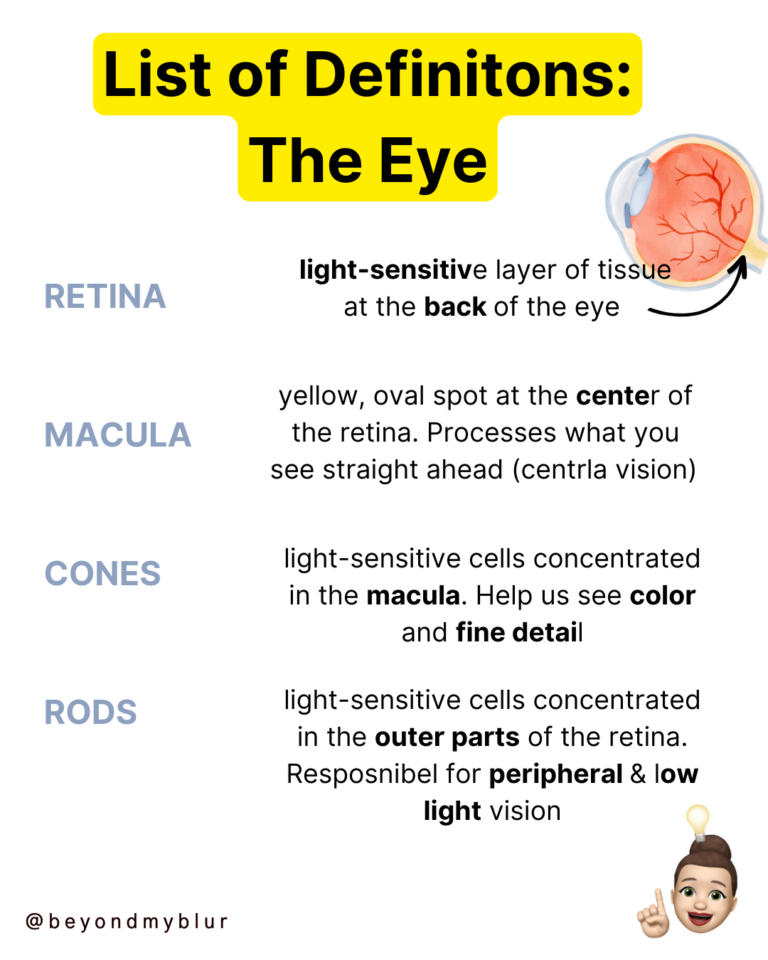
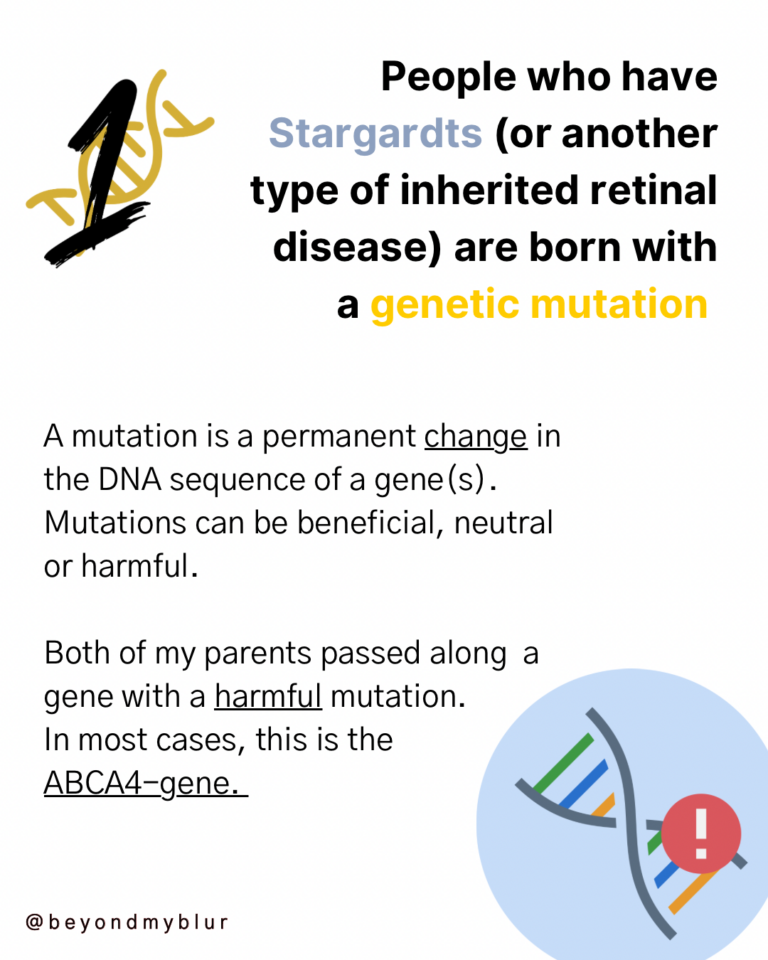
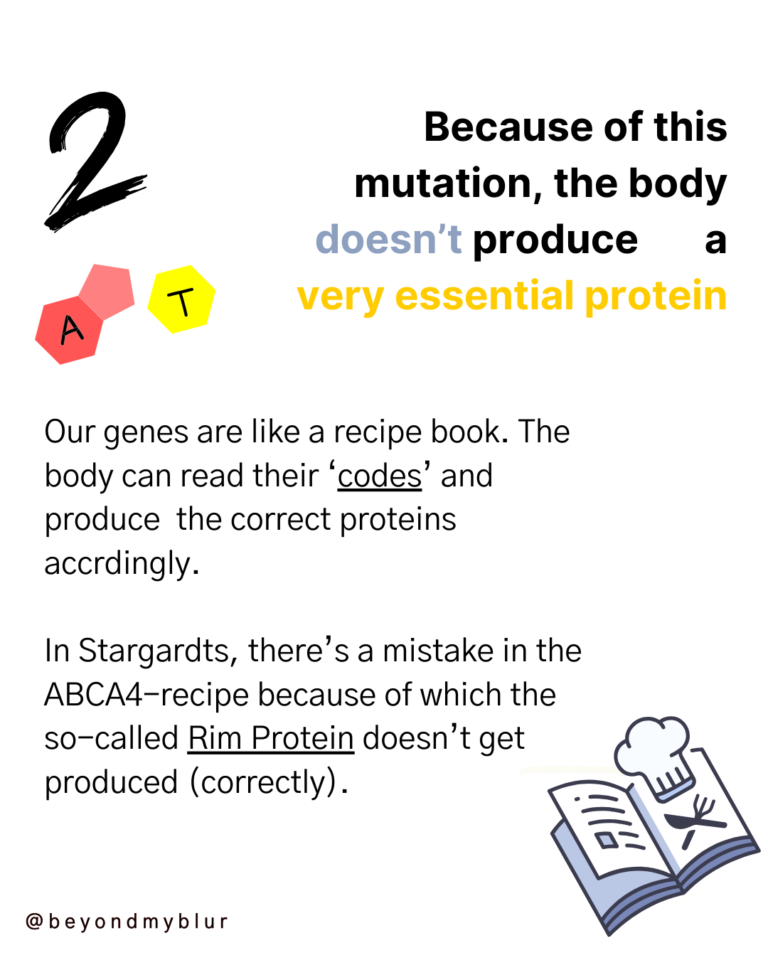

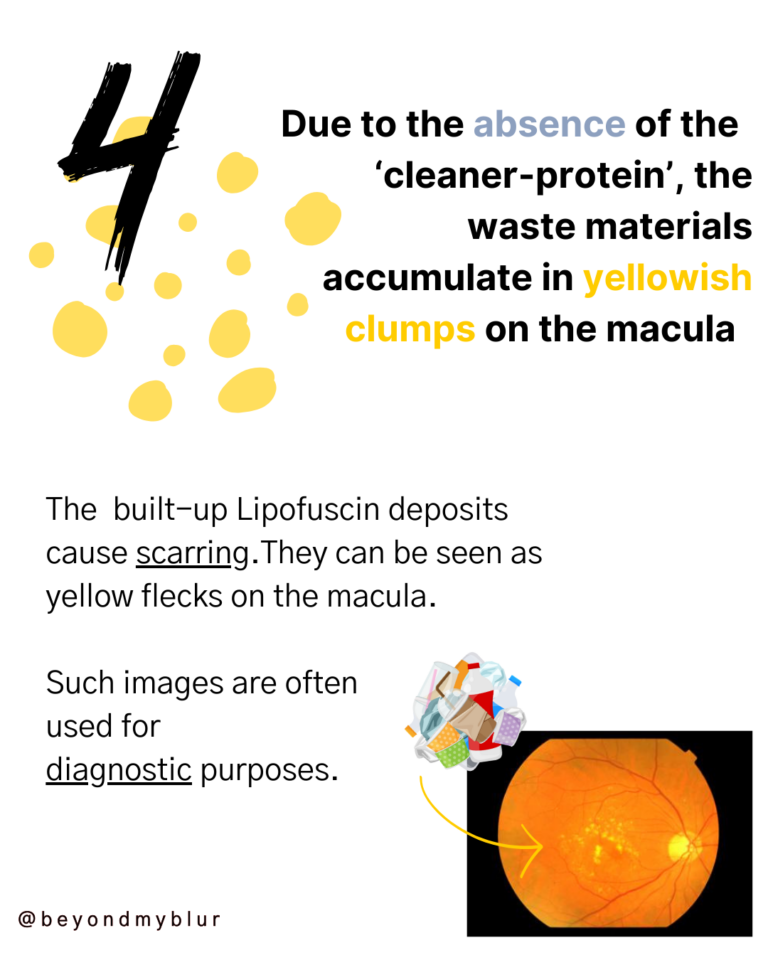
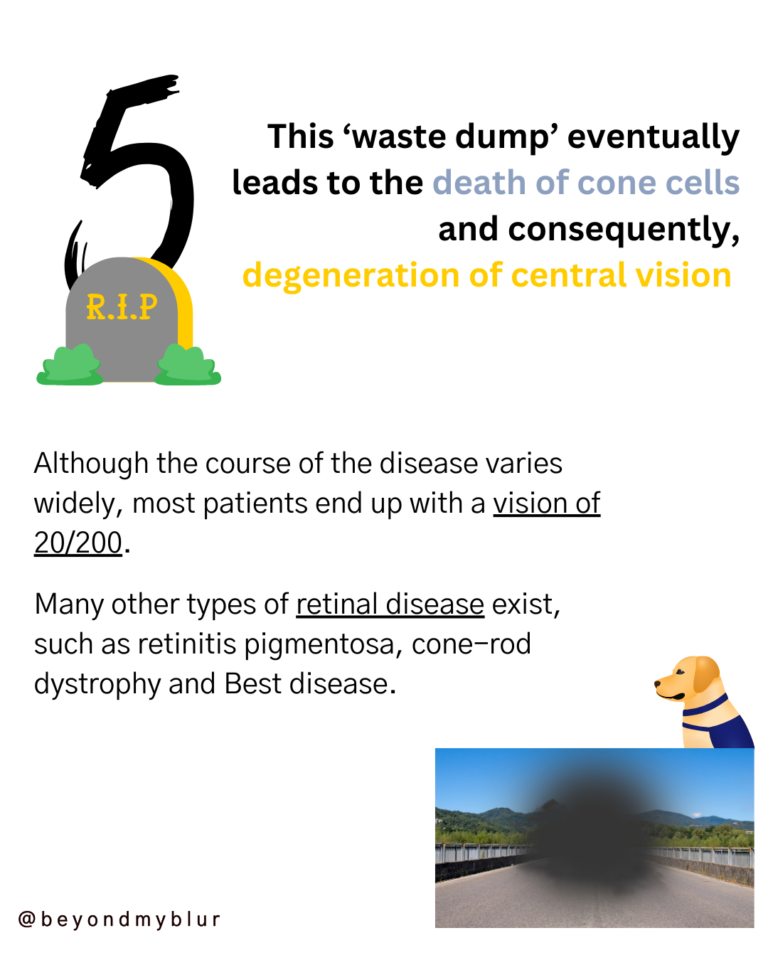
The ABCA4-Gene
In Stargardt, cone cells slowly die due to an inherited ‘genetic mistake’. People with Stargardt, like myself, are born with two mutated (‘altered’) copies of the so-called ABCA4 gene*. This gene affects how the eye uses vitamin A – a nutrient the eye needs to produce some of its retinal cells (yes, this is the reason why carrots are considered good for eye health).
Normally, the gene makes a very important protein that cleans up the fatty, toxic waste products that are left over when vitamin A is processed. However, the abnormalities in the gene disrupt the formation of this protein because of which the waste material accumulates in yellowish clumps on the macula. With time, these ‘rubbish dumps’ lead to scarring and death of the cone cells, resulting in central vision loss.=
I sometimes still find it hard to grasp that the absence of a single protein can have such damaging consequences. The yellowish flecks on the macula can be visible on photos of the retina, which are frequently used for diagnostic purposes. You can read more about the symptoms, prognosis and clinical features of Stargardt in my Q&A article!
That was it class – if you have any questions or suggestions for future topics, don’t hesitate to drop them in the comments section. Until next lesson!
Love,
Marie
PS: let this be a reminder to never be disrespectful to cleaners. We need them just as badly as ‘thinkers’ or ‘builders’
Credits to The Unseen Way for the cover photo.


